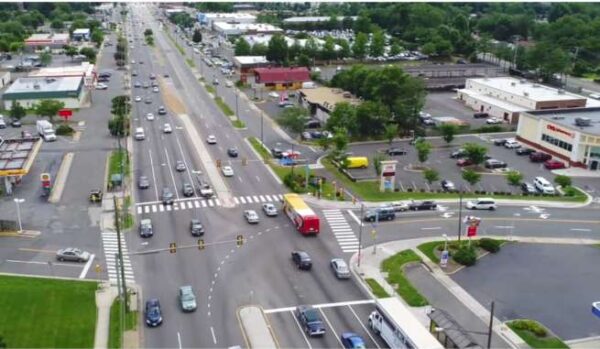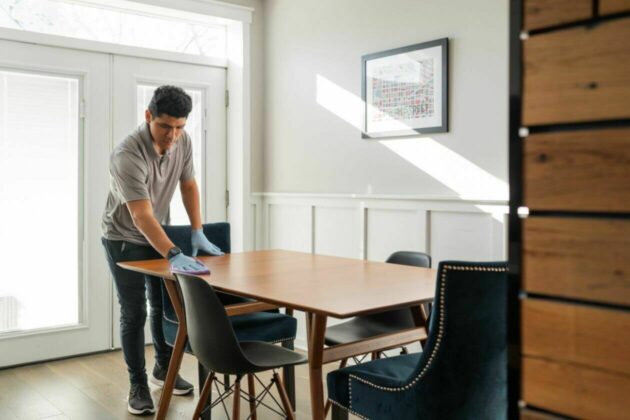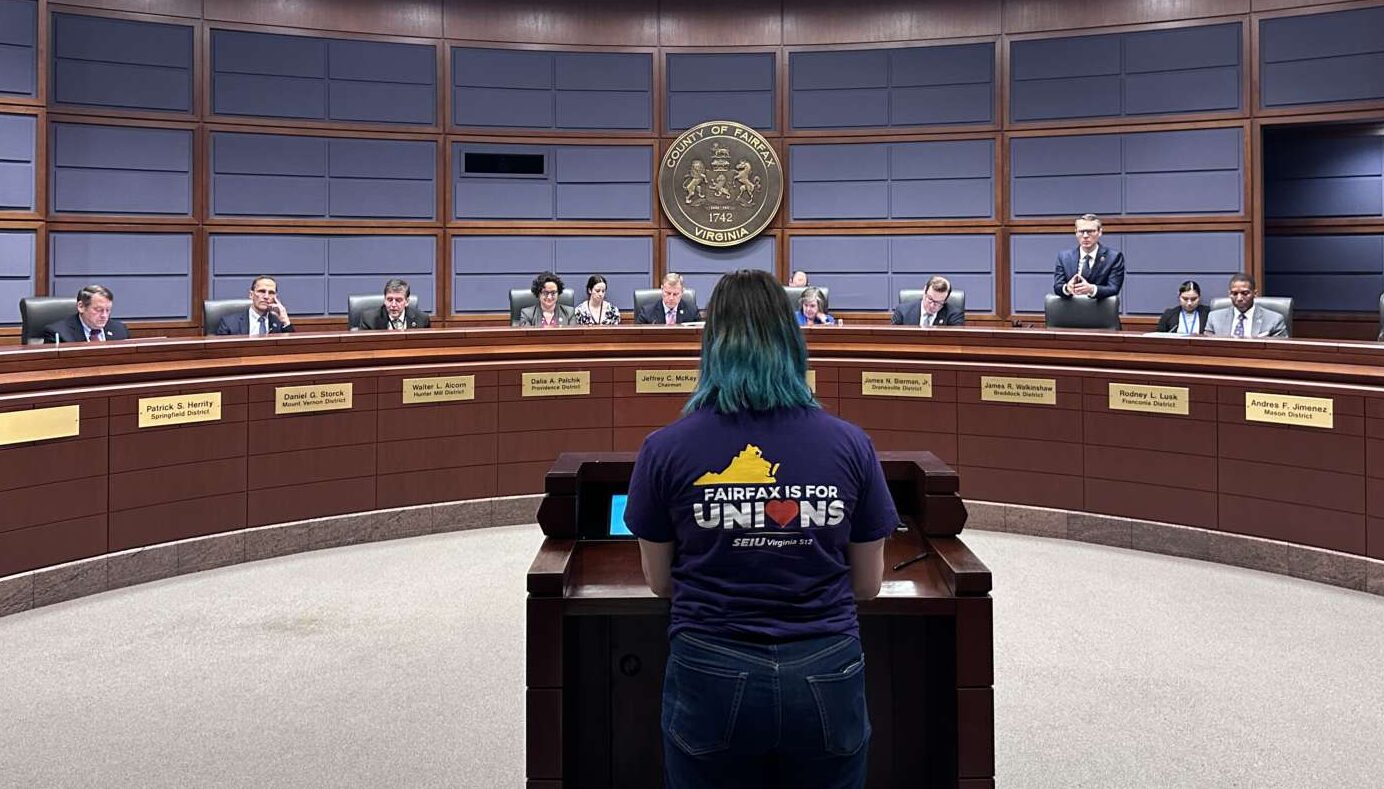
The clock is ticking for Fairfax County and the D.C. region to adopt a new transportation plan aimed at reducing greenhouse gas emissions.
This past June, the National Capital Region Transportation Planning Board (TPB) approved Visualize 2045 — a regional transportation plan that runs through 2045 and must be updated every four years, as mandated by the federal government.
At the same meeting, it voted to include greenhouse gas emission goals in the next plan, targeting cuts of 50% by 2030 and 80% by 2050.
Now, six months later, Fairfax County is already preparing to submit its segment of that plan with those emission goals in mind, but the process will be slightly different from previous years.
Presented at the Board of Supervisors transportation committee meeting on Tuesday (Jan. 31), Visualize 2050 will include “zero-based budgeting,” meaning all localities have to resubmit their transportation projects for consideration to ensure they adhere to the new emission reduction goals.
Before, most projects automatically carried over from one plan to the next, though projects could be added or taken out if needed, Fairfax County Department of Transportation planner Malcolm Watson explained to the supervisors.
Hunter Mill District Supervisor Walter Alcorn, who’s on the TPB with Braddock District Supervisor James Walkinshaw, noted that the board has had a “lively discussion” over the last few years regarding the emission goals.
“There’s been…quite a difference of opinion on the climate change stuff, particularly between the inner jurisdictions and the outer jurisdictions,” Alcorn said. “We are kind of right in between.”
County staff have identified 33 projects they expect to be part of the transportation plan and will need to be resubmitted under the new standards. Projects currently “in development” include Reston Parkway improvements, a new Dulles Airport Access road from Chain Bridge Road, and a widening of Frying Pan Road from Sully to Centreville roads.
Most of those projects are expected to be completed between 2025 and 2040.
There are 25 projects that could be exempted from the emission standards because they are already funded or under construction. Those include the Richmond Highway Bus Rapid Transit system, an I-495 overpass at Tysons Corner Center, and the $237 million Soapstone Connector.
Watson cautioned that the lists may change as projects get taken off and added, depending on priorities, the new emission goals, and other factors.
Next month, the TPB will issue a “call for projects,” and the lists will be officially published for public review.
“This will officially kick off Visualize 2050,” Watson said.
The county board ultimately will have to vote to approve the project lists over the summer before they get submitted to the TPB.
The hope is that by December 2024, the TPB will approve Visualize 2050, and the new emission goals will become the norm, making Visualize 2055 perhaps a bit less labor-intensive.
Photo via Fairfax County
Recent Stories

For many remote workers, a messy home is distracting.
You’re getting pulled into meetings, and your unread emails keep ticking up. But you can’t focus because pet hair tumbleweeds keep floating across the floor, your desk has a fine layer of dust and you keep your video off in meetings so no one sees the chaos behind you.
It’s no secret a dirty home is distracting and even adds stress to your life. And who has the energy to clean after work? That’s why it’s smart to enlist the help of professionals, like Well-Paid Maids.

Still planning for summer camps? Check out the great variety of art projects and fun teachers at Art House 7 in Arlington. We have morning, midday, and afternoon weekly camps for ages 5-13. Among our themes: Clay Creations; Animals Around the World; Arts & Crafts; Draw, Paint & Sculpt Faces & Animals; Drawing & Printmaking. We’ve recently added PaperPalooza (paper making and bookmaking) and Jewelry camps. You can see all our listings on our website.
Art House 7 has been a haven for artists of all ages since 2015, offering classes, camps, and workshops. We’re located on Langston Blvd. near the Lee Harrison Shopping Center. We have an ample 2-story studio, and plenty of free parking.
Weekly camps at Art House 7
– June 17-Aug. 9
– Camp times: 9-11am, 11am-2pm, 2:30-4:30pm
– Ages 5-13
Pedal with Petals Family Bike Ride
Join us on Saturday, May 11th and ride into spring during our Pedal with Petals Family Bike Ride. Back for its second year, Pedal with Petals is going to be bigger than ever. This year’s event will include both an
Encore Creativity for Older Adults at Capital One Hall
Encore Creativity for Older Adults is pleased to raise the curtain and welcome community members to its spring concert at Capital One Hall in Tysons, VA on May 4, 2024. The concert, which starts at 3 PM, will bring hundreds







